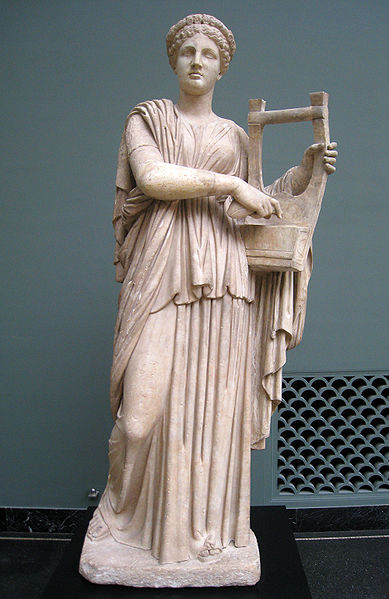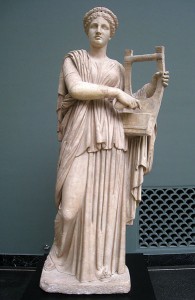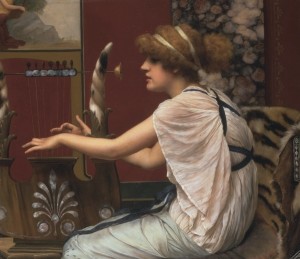
Erato (Greek: Ἐρατώ), “desired” or “lovely”, is the Muse of lyric poetry, especially love and erotic poetry. Since the Renaissance she is often shown with a wreath of myrtle and roses, holding a lyre, or a small kithara, a musical instrument that Apollo or she herself invented. Other representations may show her holding a golden arrow, reminding one of the “eros”, the feeling that she inspires in everybody, and at times she is accompanied by the god Eros, holding a torch. She is particularly fond of the poets of love. Erato would carry around golden arrows that she would give to her friend Eros who would shoot them at people making them fall in love with the first thing they would see. Erato and Eros would wonder all over striking people with inspiring love poems and then would make them fall in love. Erato married King Malos of Malea and they had a daughter who they named Kleophema.
The Muses were nymphs, daughters of Zeus and Mnemosyne (“Memory”), born at Pieria, in Thrace, and nursed by Eupheme. Nymphs are nature spirits, protectors of springs, rivers and mountains, who are usually depicted as young girls. The Muses were nymphs of inspiring springs. The names and number of the Muses varied until the Greeks settled on the 9 Muses, who became known as goddesses of the arts and sciences.





